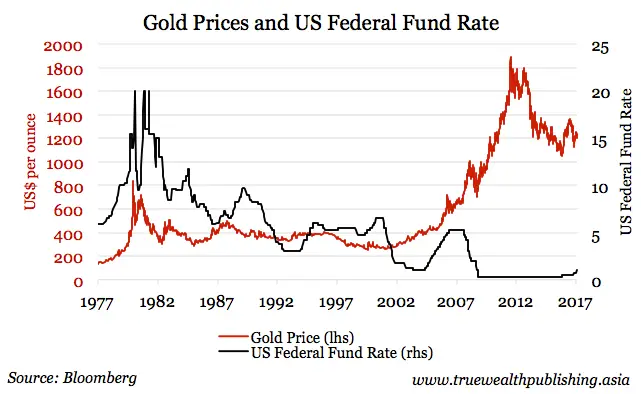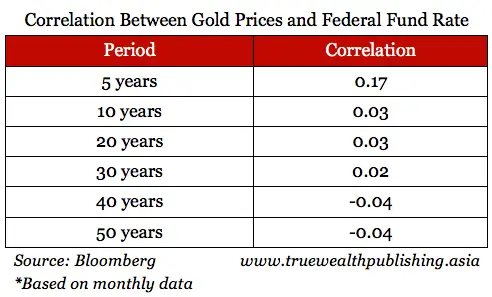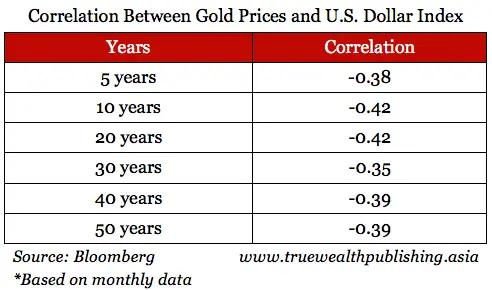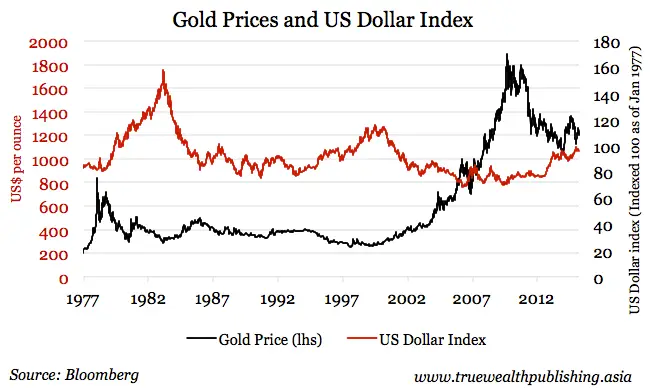This is a guest post from Kim Iskyan, publisher of Stansberry Churchouse Research, an independent investment research company based in Singapore and Hong Kong that delivers investment insight on Asia and around the world. This post originally posted at “What naughty kids and the U.S. interest rate hike have in common” and is republished here with permission.
In March, the U.S. Federal Reserve boosted interest rates. Conventional wisdom says this is bad for stocks and commodities (like gold). And the dollar should strengthen, too. But the immediate reaction was exactly the opposite.
Here’s why:
Let’s say… your young son is a troublemaker. He’s bright and personable and uses his charisma to draw others into schemes that end with a call from the school principal. His grades are somewhere between awful and terrible.
Then something changes. One month passes, and then another, with no drama. He’s coming home on time. The principal hasn’t called for a while. His report card, while mediocre, is no longer terrible.
But you’re ecstatic. At least: Relative to expectations, the fact that he isn’t in a bubbling vat of trouble is a massive, D-Day-like victory.
That’s how markets react when things turn out not to be as bad as investors feared.
Your troublesome kid and interest rates
In March, the U.S. central bank announced that it was raising the federal funds rate by a quarter of a percentage point. This is the interest rate the U.S. central bank charges other U.S. banks to borrow money. It was the third hike in the past 10 years, and the second this year.
This matters because what the Fed does is closely watched by investors, and other central banks, around the world. If the Fed raises interest rates, many other central banks around the world follow suit (China already has). This means higher lending rates for borrowers… and higher returns on cash for depositors. It’s a key driver of global financial markets.
Conventional wisdom suggests that higher U.S. interest rates…
… are bad news for stocks. A higher yield on cash means that stocks are relatively less attractive (as safe cash now provides a slightly higher return). So some money moves from stocks to cash.
… lead to a stronger U.S. dollar. A slightly higher yield will attract cash that’s invested in other currencies.
… lead to lower prices for many commodities, like gold. Since most commodities are priced in U.S. dollars, a stronger dollar means that commodities are more expensive for investors who don’t hold dollars. So demand declines in the face of (all else being equal) a higher dollar-denominated price.
But yet in March, the price of gold moved up. And the U.S. dollar fell. It’s short term results, of course. But it’s remarkable that markets did the opposite of what we might expect.
Expectations and reality
So why did commodities like gold (which arguably should have dropped) go up after interest rates rose? And why did the dollar fall?
Bloomberg explained: “Federal Reserve Chair Janet Yellen sought to reassure investors that the central bank’s latest interest-rate increase wasn’t a paradigm shift to a trigger-happy policy driven by fears of faster inflation.”
And: “… markets are reacting to Federal Reserve officials’ forecast that rates will rise three times this year, which is in line with its outlook from December. Some investors had thought policy makers might change it to four increases.”
In other words… you were expecting your kid to burn down the house, and instead he sat in his room and watched Netflix. Investors were afraid that the Fed was going to talk about lots of rate hikes soon – but instead, it said, don’t worry, carry on.
The conventional wisdom is wrong anyway
What’s more… contrary to conventional wisdom, gold and interest rates actually move independently. The chart below shows the federal funds rate and gold prices since 1976. There were seven periods of significant interest rate hikes over this 40-year stretch. For three of those periods, gold prices dropped for roughly the two years after the rate hikes began. During one set of hikes, gold prices stayed relatively flat. And, during the three other periods, gold prices increased along with interest rates.

In fact, there’s actually no correlation between the federal funds rate, and the price of gold.
Correlation measures the relationship between two or more assets, on a scale of positive 1 to negative 1. When two assets have a positive correlation (approaching 1), they tend to move in the same direction at about the same time. When they have a negative correlation (approaching -1), they tend to move in opposite directions.
A correlation of, or close to, zero means two assets move independently. As you’ll see in the following chart, the correlation between gold prices and the federal funds rate is weak. While it’s increased slightly over the past five years, historically it hovers near zero. (The federal funds rate is not an asset, but we can still measure its correlation to the price of assets like gold).

It’s the U.S. dollar that matters
However, the strength or weakness of the U.S. dollar – measured here by the U.S. dollar index, which tracks the dollar against other major currencies – is a strong indicator of gold’s next move.
As you can see in the chart below, gold prices and the U.S. dollar have a strong negative correlation. Historically, it lingers near -0.4. That means that when the value of the dollar goes up, gold prices tend to go down, and vice versa.

This strong negative correlation is clear when you look at their long-term price histories. The next chart shows the U.S. dollar and gold prices over the past 40 years. Notice how gold prices (in red) tend to go up when the value of the U.S. dollar (in black) goes down.

Put simply, if you want to know what gold will do next, forget about the Fed and look at the U.S. dollar.
Regardless of the short-term changes in the price of gold, it’s good to own some anyway. It is one of the best hedges against stock market declines and is viewed as an alternative currency that holds its value.
The easiest way to get exposure to gold, try the SPDR Gold Shares ETF (Singapore; code: O87), or the Value Gold ETF (Hong Kong; code 3081). Both ETFs own actual physical gold and allow investors to track gold prices. You can also buy the SPDR Gold Trust ETF on the New York Stock Exchange (ticker: GLD).
This is a guest post from Kim Iskyan, publisher of Stansberry Churchouse Research, an independent investment research company based in Singapore and Hong Kong that delivers investment insight on Asia and around the world. You can also follow them on Twitter @stchresearch .